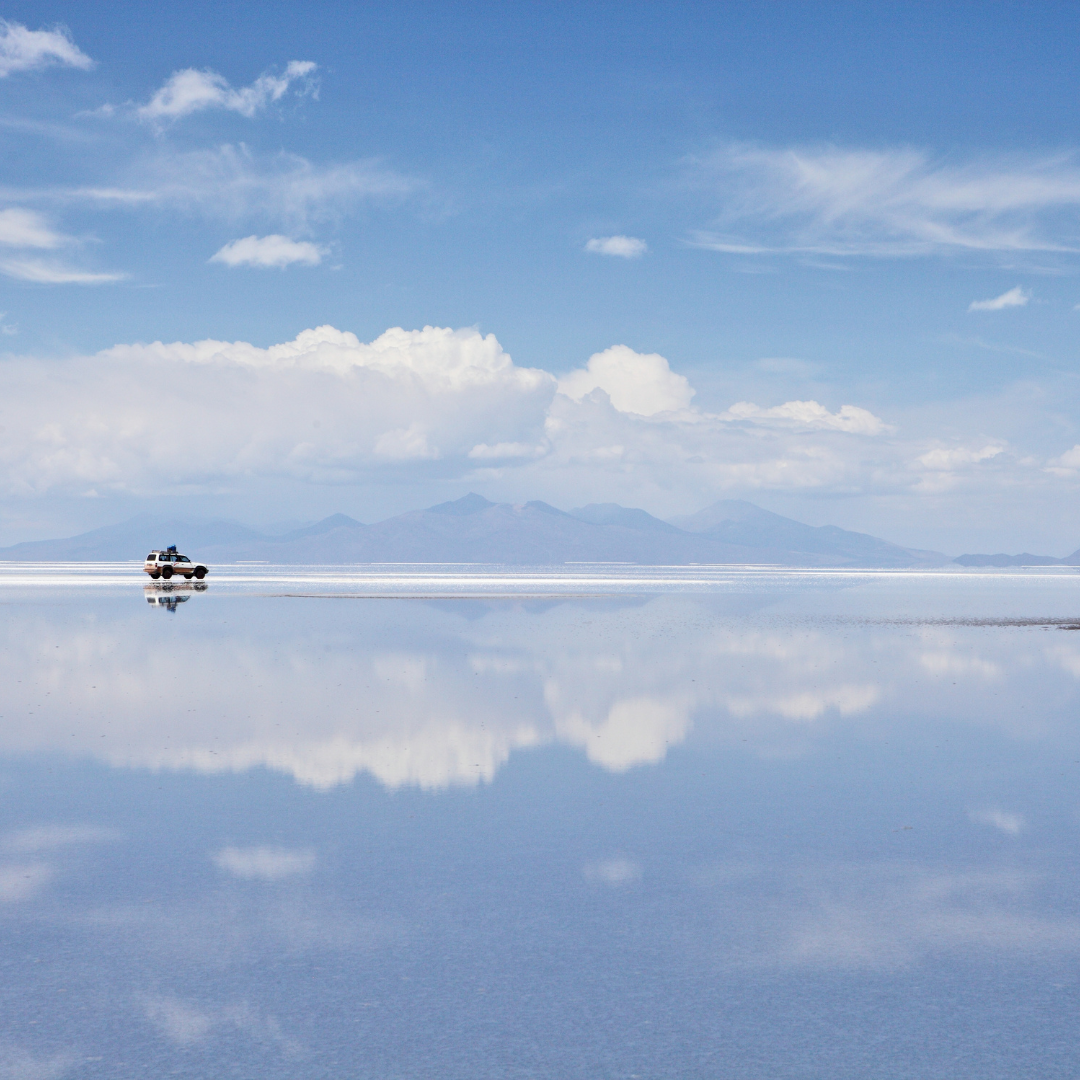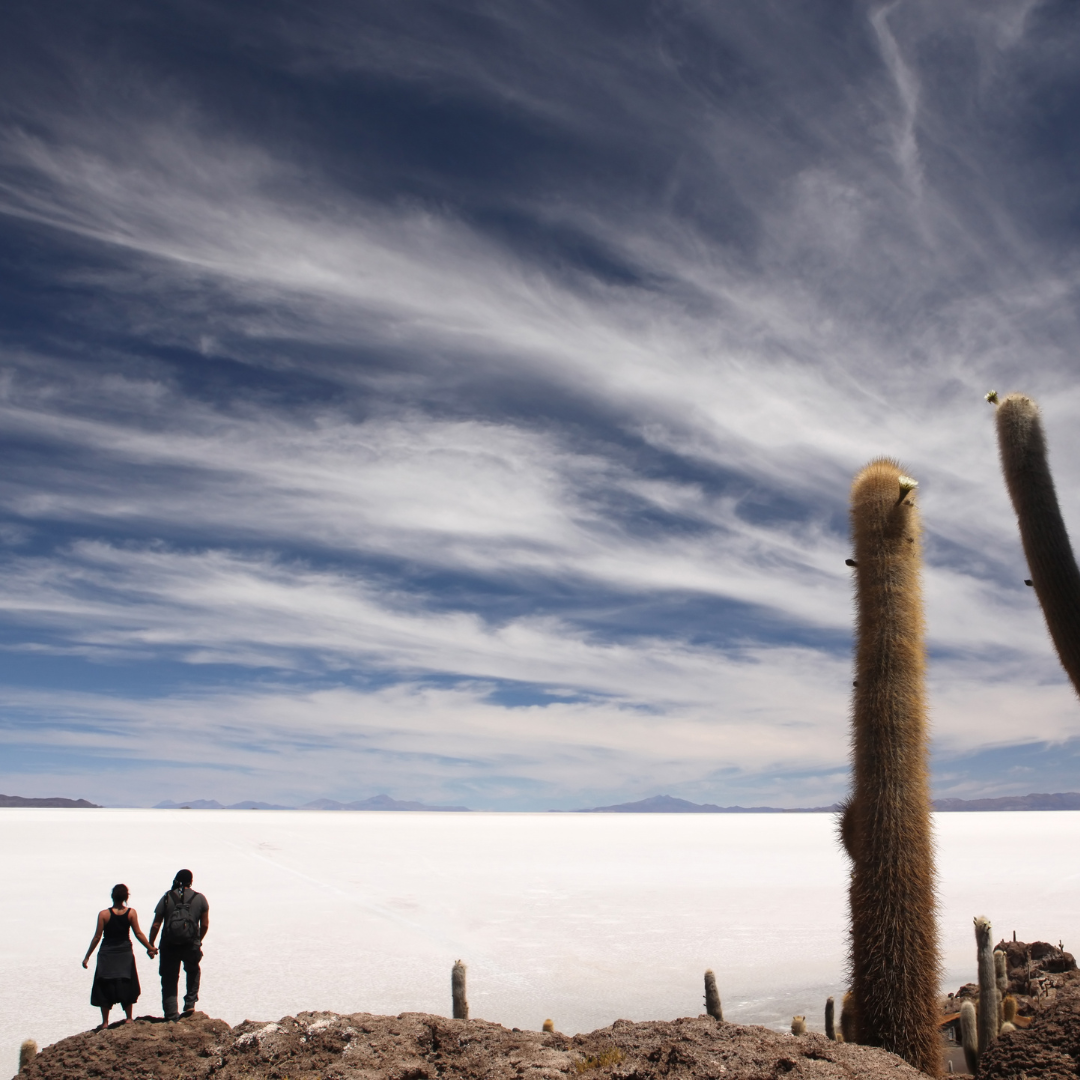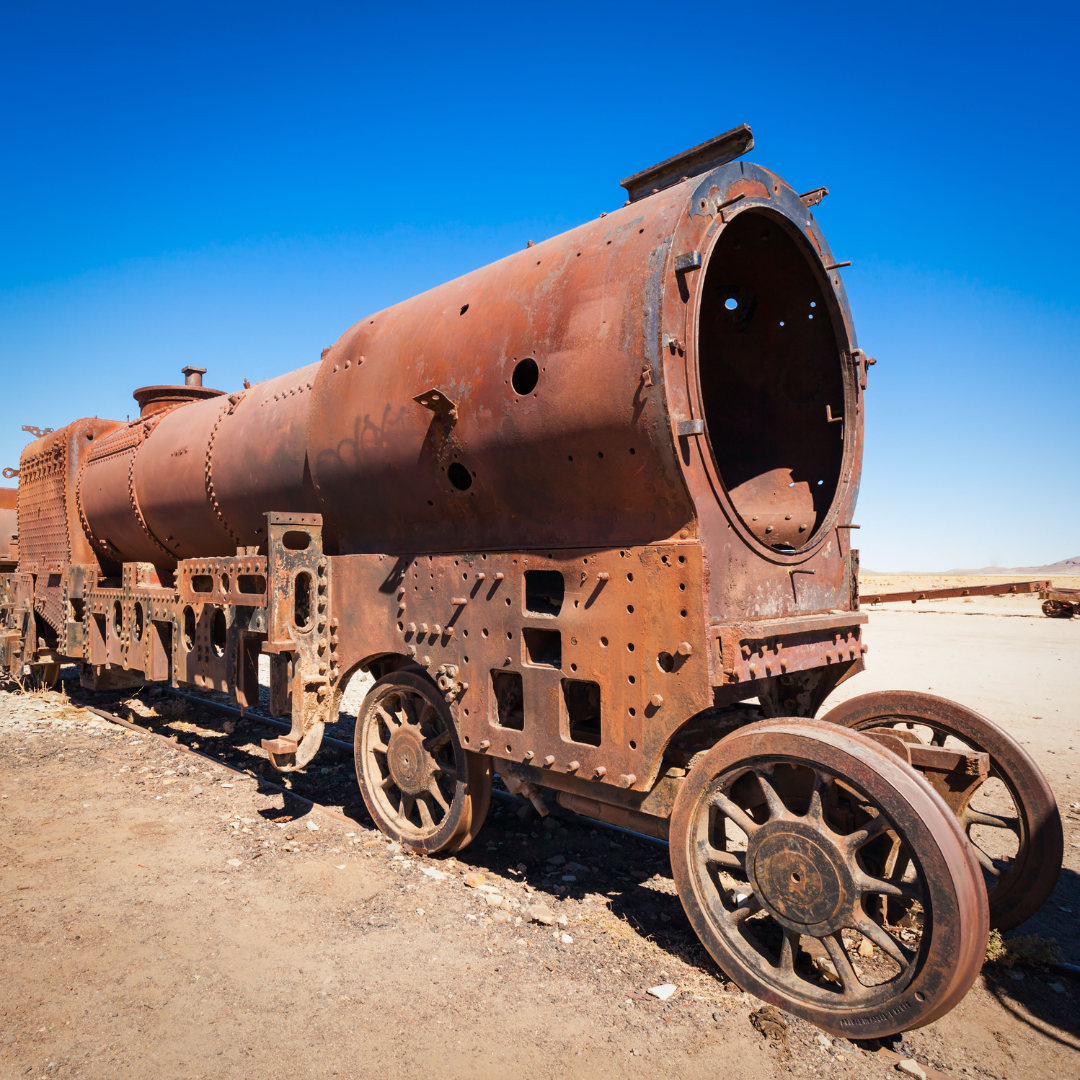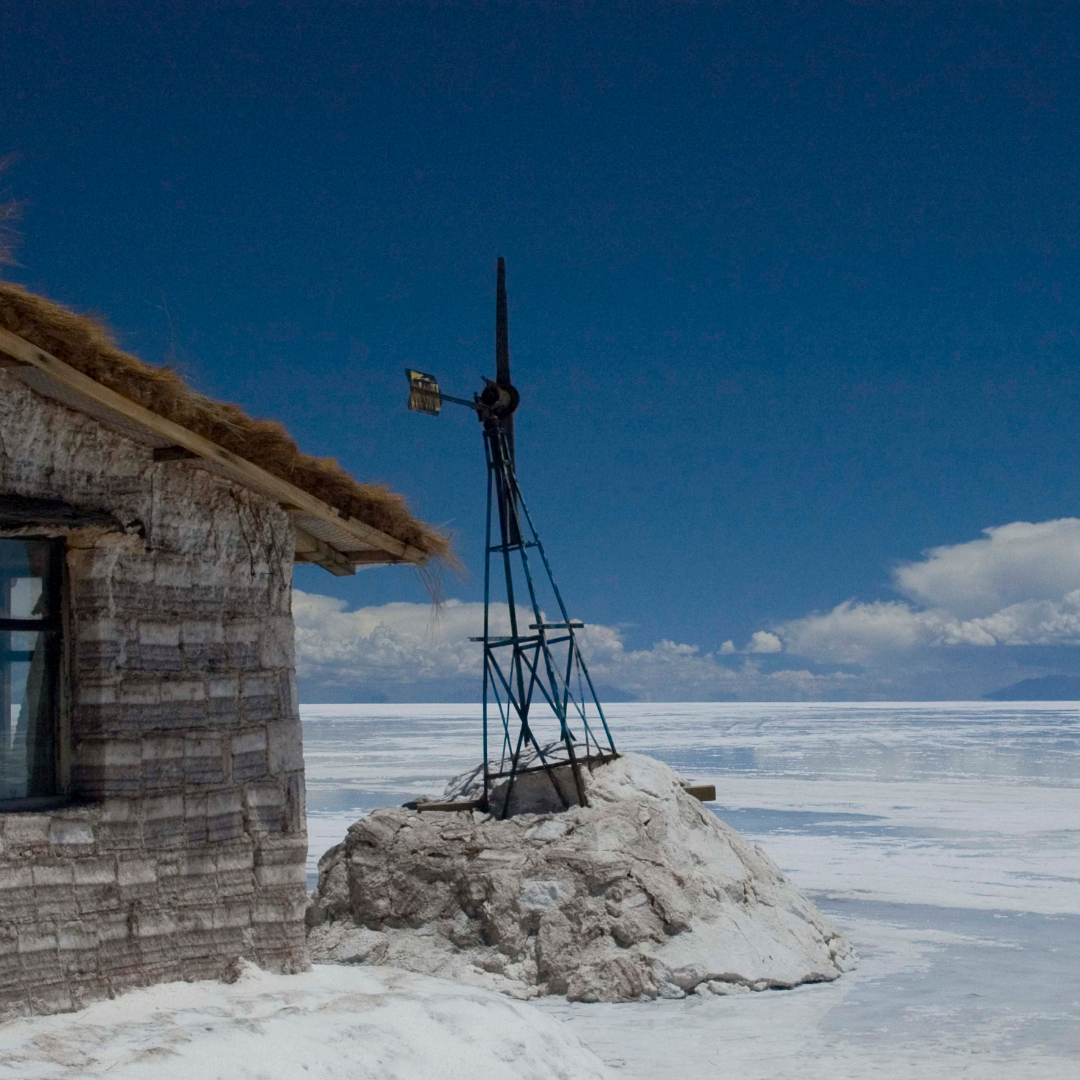Salt Flats in Bolivia

Visiting the Salt Flats in Bolivia, specifically the Salar de Uyuni, offers an otherworldly experience that's unparalleled anywhere on Earth. The Salar de Uyuni is the world's largest salt flat, spanning over 10,000 square kilometers (approximately 4,000 square miles) and is situated at an altitude of 3,656 meters (about 11,995 feet) above sea level in the southwest of Bolivia. This vast, stark white salt desert becomes even more surreal during the rainy season, offering a unique and unforgettable adventure.

The Mirror Effect
Rainy Season Magic:
During the rainy season, from December to April, the Salar de Uyuni transforms into a colossal mirror when a thin layer of water covers the salt crust. This creates a perfect reflection of the sky above, making it difficult to tell where the sky ends and the earth begins.

Photography Paradise:
The mirror effect makes the Salar de Uyuni a dream location for photographers, both amateur and professional. The seamless blending of sky and ground creates unique and stunning photo opportunities that capture the vastness and beauty of this natural wonder.
Unique Experiences
Island Exploration:
Within the salt flats, there are several "islands" like Isla Incahuasi and Isla del Pescado, which are covered in giant cacti and offer panoramic views of the salt flats. These islands serve as reminders that the salt flats were once prehistoric lakes.
Flora and Fauna:
Despite the harsh conditions, the Salar de Uyuni is home to resilient species of flora and fauna. Visitors may encounter the Andean fox, vizcachas (a type of rodent), and during the breeding season, a significant population of pink flamingos that thrives in the nearby lagoons.
Star Gazing:
The clear skies and the absence of light pollution make the salt flats an excellent spot for stargazing. The Milky Way and countless stars reflect on the mirror surface, creating a feeling of floating in space.
Cultural and Historical Aspects

Train Cemetery
Near the town of Uyuni, there's a "train cemetery" where abandoned 19th-century trains and equipment rust away. It's a fascinating sight that tells a part of Bolivia's history.

Local Communities
Around the Salar de Uyuni, there are several small communities where visitors can learn about the local culture and livelihoods, including salt harvesting and quinoa farming.
Travel Tips
Best Time to Visit:
To experience the mirror effect, plan your visit during the rainy season. However, travel during this time can be tricky as some areas may be inaccessible due to flooding.
Guided Tours:
It's highly recommended to explore the Salar de Uyuni with a guided tour. Local guides know the area well and can navigate the vast, featureless landscape safely, besides providing insights into the region's geology, ecology, and history.
Preparation:
Given the extreme environment (strong sun, reflection, altitude), visitors should come prepared with sun protection, sunglasses, appropriate clothing, and hydration. Acclimatization to the high altitude before visiting is also advisable to prevent altitude sickness.
The Salar de Uyuni is not just a destination; it's an experience that defies expectation and leaves lasting impressions. Its sheer vastness, natural beauty, and the unique phenomena of the rainy season's mirror effect make it a must-visit for those seeking the extraordinary.
Official Tourism Websites
Bolivian Tourism Ministry:
While there's no specific website dedicated solely to tourism by the Bolivian government, their official portals and associated pages often provide useful contacts and information on national parks and protected areas, including the Salar de Uyuni.
This unofficial tourism website and similar platforms offer comprehensive guides on traveling to Bolivia, including the Salar de Uyuni. They provide insights into attractions, itineraries, and practical travel tips.

Booking Platforms &
Tour Operators
A comparison website that allows you to compare different tours and experiences in South America, including various tours to the Salar de Uyuni, helping you find the best option suited to your preferences.
An agency specializing in South American tours offering several options for visiting the Salar de Uyuni, including day trips and longer excursions that explore the salt flats and surrounding areas.
Known for their hop-on, hop-off bus service in Bolivia and Peru, Bolivia Hop also offers packages and tours to the Salar de Uyuni, providing a flexible way to explore the region along with other destinations.

Travel Blogs and Guides
Travel blogs:
Individual travel bloggers often share detailed accounts of their experiences in the Salar de Uyuni, offering tips on what to do, what to expect, and how to prepare for the trip. These firsthand accounts can be invaluable for planning purposes.
Lonely Planet and TripAdvisor:
Both platforms offer travel forums where past visitors share advice and recommendations on touring the Salar de Uyuni. Lonely Planet’s guidebooks also typically include sections on the salt flats, offering insights into planning your visit.
Preparation and What to Bring
Clothing:
Due to the vast range of temperatures in the Salar de Uyuni (very cold in the morning and at night, but can be quite warm during the day), it's recommended to dress in layers. Waterproof and warm clothing is essential, as well as comfortable footwear suitable for walking on salt.
Protection:
Sunscreen, sunglasses, and a hat are crucial due to the strong UV rays reflected off the salt flats. Also, consider bringing a good quality lip balm and moisturizer to combat the dry air.
Photography Equipment:
Don’t forget your camera and possibly a tripod for those famous perspective photos and stunning landscapes. Extra batteries and memory cards are recommended due to the cold temperatures that can drain battery life quickly.
Packing:
You can learn more on what to pack here.
Safety and Environmental Considerations
When visiting the Salar de Uyuni, it's important to respect the natural environment and follow all guidelines provided by tour operators and local authorities. This includes not littering and avoiding any actions that could damage the salt flats or disrupt local wildlife.
By using these resources, you can ensure a well-planned and unforgettable adventure to the Salar de Uyuni, fully prepared to experience the beauty and uniqueness of this natural wonder.